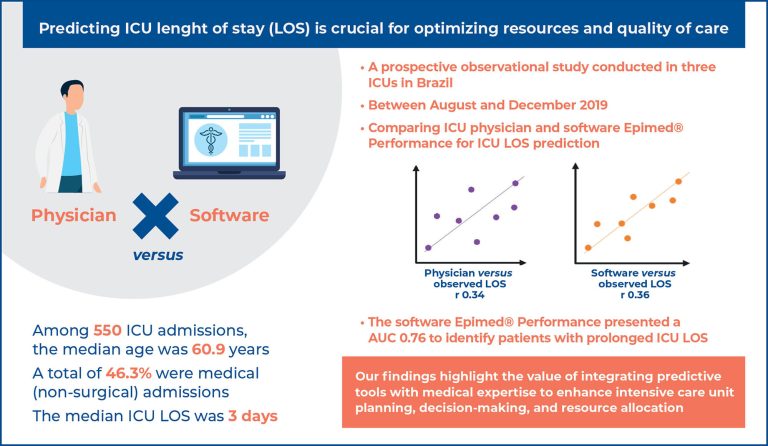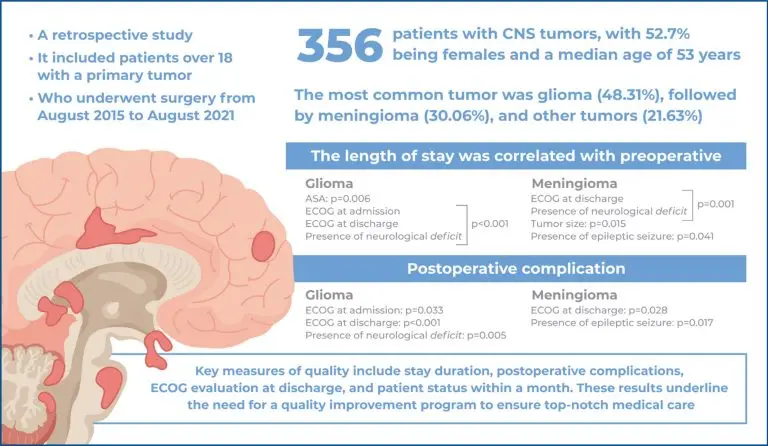25/Nov/2025
Predicting intensive care unit length of stay: comparing physician assessments with software predictions in a multicenter study
einstein (São Paulo). 25/Nov/2025;23:eAO1265.
View Article25/Nov/2025
Predicting intensive care unit length of stay: comparing physician assessments with software predictions in a multicenter study
DOI: 10.31744/einstein_journal/2025AO1265
Highlights ■ The sample included 555 patients from three hospitals (both public and private), representing diverse care settings. ■ Physician and software predictions showed moderate correlation with observed intensive care unit length of stay, highlighting limitations in absolute prediction accuracy. ■ Categorizing length of stay into time periods (<2, 2-5, >5 days) improved prediction accuracy to approximately 60% for both physicians and Epimed Monitor Performance®. ■ Epimed Monitor Performance® identified patients at risk of prolonged intensive care unit stay with […]
Keywords: Critical care; Data science; Databases, factual; Intensive care units; Length of stay; Prediction algorithm; Quality improvement; Quality of Health Care; Registries; Risk Factors
28/Apr/2025
Quality assessment of clinical practice in neuro-oncology
DOI: 10.31744/einstein_journal/2025AO1343
Highlights ■ The molecular test according to the WHO classification of CNS tumors (gliomas) was performed in 100% (172) of patients. ■ Education on chemotherapy and informed consent for patients with brain tumors was carried out for 100% (130) of the patients who had an indication for chemotherapy treatment. ■ Approximately 87% of the patients with gliomas underwent postoperative cranial MRI. ■ A multidisciplinary approach, including molecular testing, was used for 35% of patients with glioma. ■ Thromboembolic events after […]
Keywords: Brain neoplasms; Central nervous system neoplasms; Glioma; Length of stay; Magnetic resonance imaging; Meningioma; Patient outcome assessment; Postoperative complications; Quality improvement; Quality Indicators, Health Care
24/Mar/2015
Association between participation and compliance with Continuing Medical Education and care production by physicians: a cross-sectional study
einstein (São Paulo). 24/Mar/2015;13(1):1-6.
View Article24/Mar/2015
Association between participation and compliance with Continuing Medical Education and care production by physicians: a cross-sectional study
DOI: 10.1590/S1679-45082015AO3189
Objective Physician participation in Continuing Medical Education programs may be influenced by a number of factors. To evaluate the factors associated with compliance with the Continuing Medical Education requirements at a private hospital, we investigated whether physicians’ activity, measured by volumes of admissions and procedures, was associated with obtaining 40 Continuing Medical Education credits (40 hours of activities) in a 12-month cycle. Methods In an exclusive and non-mandatory Continuing Medical Education program, we collected physicians’ numbers of hospital admissions and […]
Keywords: Education; Education, medical, continuing; Medicine; Practice management, medical; Quality improvement; Surgery




